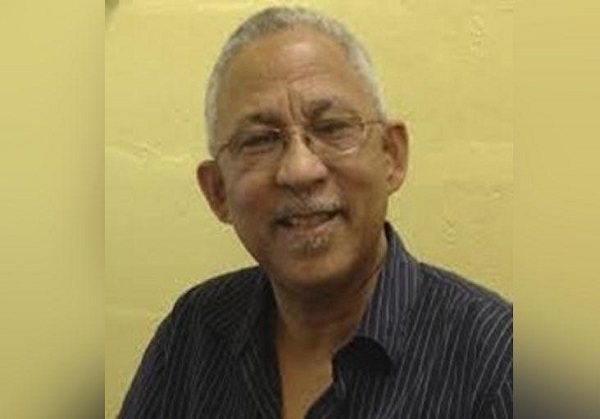The attention on the 40 scholarships won by Lakshmi Girls’ Hindu School and on them winning the president’s medal overlooked the mind-boggling consistent performance of the St Augustine Girls’ High School that copped 28 open scholarships, which is 13 more than their closest rivals.
The Greater St Augustine area, defined as from St Joseph to Trincity, through seven schools accounts for 80 such scholarships or 45% of the national total. This concentrated achievement cries out for examination as a means of lifting the national performance.
The area is an amalgam of middle- and upper-income neighbourhoods with parents who have higher education and considerable assets. These parents can afford to volunteer at the schools since they have more time available because either they have flexible work arrangements, or in the case of some mothers, do not work.

Through this involvement, they inevitably bond with the teachers and school administrators and can discuss current schooling problems and future plans for their adolescents. Family cohesion increases the ability to monitor their children, and they are aided in this task by the parental social networks developed within the school and work contexts.
These networks provide tacit knowledge that enables the nurturing of cognitive, social and emotional skills in the students, and which facilitate them absorbing more at school. As the adult son of a friend recently put it in an email to me:
“As a child in Camden, I thought all black men were doctors because all of my father’s (a radiologist who had emigrated to this country from Trinidad to attend college) friends were doctors (one even drove a Maserati!). I thought it quite normal for people to spend their free time studying medical books like my mother who passed the medical boards in internal medicine in the first time in the early 1960s.”
The Greater St Augustine community, in which they live, has low crime rates and, therefore, is a low-stress environment and is equipped with a range of learning opportunities, not limited to academics. The parents have higher expectations for their children and their networks support academic and life goals.
The link between the parents, their networks and the school administration act as a brake on potential behavioural problems. The reduction of the potential for aggression and inattention increases potentially useful social skills, which are positively correlated with achievement.
They inculcate in their children a positive growth mindset. The children believe that they can do whatever they put their minds to. They have a lower fear of failure and, therefore, set higher learning goals.

This dominant theory that ‘if we work hard, we will achieve’ is undermined for the poor who are disadvantaged by the absence of the enabling factors noted earlier. The children of poorer neighbourhoods seldom are encouraged to develop evidence of personal competence and have fewer positive role models. Their parents’ networks are feeble and limited. Time, a scarce resource due to work hours, and competing demands on their available cash limit the potential school involvement for these parents.
The cost of homes in the high-performing areas precludes residency by the poorer families thus creating higher travel expenses for strained budgets as well as robbing the children of the chance of seeing positive role models. The emphasis on zoning creates another structural barrier for poor students with ability. Even when a poor child gets into one of the high-performing schools, the stress levels are high because that child does not have the money and other resources to be a true peer and may lack the tacit knowledge needed for quick success.
If the child does not get into these schools because of zoning, she will meet the least experienced teachers and other children who would be less motivated to participate consistently in schoolwork. Of course, there are dedicated teachers who work assiduously in these neighbourhoods, but they are not the norm.
School performance is driven by the quality of the leadership, the principal and the board. This is and has been demonstrated in the Catholic, the Presbyterian and now the Hindu schools. The tragedy of many government schools is that tenure, and not commitment to the academic cause, determines who is the principal since the boards are weak.
It is the principal or the school administrators who dictate the classroom practices. The damage that can be done by a poorly performing principal can last for decades. Frequently, there is no tangible community support for government schools for various reasons.

High academic achievement is self-perpetuating, success attracts the best teachers and students. This is the nature of what we call ‘prestige’ schools. But tradition can be created, if there is a clear vision focused on student learning and proper organisation of the curriculum, and if the school is supported by the host community.
Wired868 recently spoke to the visceral support of the Moruga community in the recent school football competitions. This type of support tells the students that they are not alone. The same applies in the academic sphere. When the Old Boys/Girls Association turns up, they add to the feeling of pride. When the businesses and associations in the community adopt the school and donate, there is a bounce in the steps of the students.
Students also know that undisciplined behaviour outside of the school premises will be reported. The continuing success of Bishop Anstey & Trinity College East, a relatively new school, which got 10 open scholarships this year is an example of how this works.
Children from wealthier families have many chances at success, poor children often have only one, the educational route. How we treat the poor children among us tells us who we are.

Noble Philip, a retired business executive, is trying to interpret Jesus’ relationships with the poor and rich among us. A Seeker, not a Saint.
 Wired868 Wired868 for smart sport news and opinion
Wired868 Wired868 for smart sport news and opinion







Naps girl alumnus here.
1. The vast majority of the girls attending my school came from middle-income to super-wealthy homes. Many had a legacy with the school (a family member was a former Naps student. My father was a Naps boy and former National Scholarship winner) and it was almost a fait accompli that they were going to attend.
2. They came from Primary Schools that were already known as either Private Prep schools that funnel most of their graduates into “Prestige Schools” or came from parochial/denominational schools that are also highly selective in which students get to attend their schools in the first place. The social class filter began EARLY.
3. We had bad behavior, rebels and even students who slashed teachers tires. We had girls who smoked, partied, had boyfriends and were sexually active (savvy enough to use birth control or obtain abortions). Surprisingly, they were not from the single-parent and/or lower-income families (those girls were the most well-behaved because they were on a mission to advance out of poverty). The bad gyals and rude gyals were from very wealthy, two-parent families with last names you will know if I tattle-tale. Their families can pay to have it covered up. No police reports. No press about whenever these incidents happen.
4. We had students who were emotionally or personality or behaviorally disordered. We had students with dyslexia and other learning disabilities. Again, the best resources were wielded to get them help.
5. We had a handful of poor students. They were supported by a charitable fund that provided all their uniforms, books, equipment etc. I should mention, this was mostly RURAL poor not URBAN poor. There is a huge difference regarding the culture/mentality/challenges presented by these two kinds of poverty.
6. We were constantly raising funds. My classmates and I folded NUFF wantons, filled NUFF pastry puffs, fry NUFF aloo pie and beg for NUFF money to sell for school functions, school repairs, etc. etc. Raising money for the school and the upkeep of the school, was placed on student’s shoulders and their parents. There was a deep-seated sense of ownership and pride in the school.
I fully respect the superior level of faculty and advanced systems of learning employed (at the time) as well as a vast array of extracurriculars made available to students. From Form1 I had my choice of sporting and arts and academic extracurricular pursuits. I fully agree with the article here as well.
But let us not pretend that Education in T&T is not and has not been for a long time, a socio-economic class filtering process to maintain the status quo of a huge divide between the haves and have nots.
An interesting read with a lot of truth especially regarding leadership. My thesis for my Msc was based on leadership, it was on Principals and their leadership styles and it’s impact on teacher performance and motivation. This topic was based on my own experience under three very different Principals in a few years. My findings concurred with the literature above and referenced material. Sadly government schools often get “seniority” leaders as against “best fit”.
On the issue of teachers however, while I understand the points raised I have to disagree with the authors assertion “If the child does not get into these schools because of zoning, she will meet the least experienced teachers and other children who would be less motivated to participate consistently in schoolwork. Of course, there are dedicated teachers who work assiduously in these neighbourhoods, but they are not the norm.” Government school teachers work harder than board teachers, they have the luxury of parental support, extra lessons and an overall “prepared child” to work with. We have to do it all and fight against all odds, I am of the firm belief some “prestige” teachers are no match for us because we literally have to teach while they merely guide ( that’s a whole other topic though and maybe my next research paper). What was illustrated shows the ideal conditions for student learning ergo high performance is expected and not necessarily a result of better teachers. LEADERSHIP however is spot on. Give government schools the right leadership and of course some more resources and we will have a much better chance of competing.
If Phillips’ argument is valid, how come Syrians, who’ve been affluent since the 1960s, are rarely among scholarship winners? How come Indos’ academic achievements preceded any increase in affluence? And, since Afros and Indos are economically on par, why is the former underrepresented in the scholarships lists?
Kevin, you need to recognise that the scions of the Syrian Lebanese community go abroad for secondary schooling and this is the reason that this tiny community rarely show up. Remember they are literally less than 1%.
You should review the excellent work done by Rhona Reddock and Carl Campbell, if not Selywn Ryan on the social mobility and ethnicity entanglement in the post Independence period. You of course may wish to read Jessica’s comments more carefully and digest how this works at a micro level. I have offered some paltry remarks on this on a more macro level but maybe my scholarship masked in simple language does not suffice.